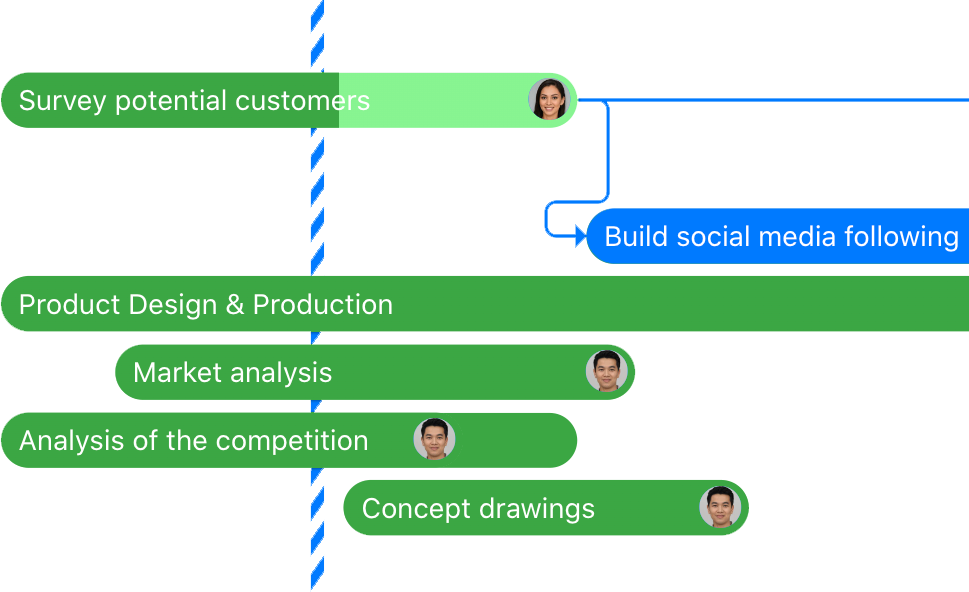
When it comes to tackling workplace goals consistently and effectively, good project management is key. Through project management, every worker knows what to do, every employee knows his or her place, and every task gets completed on time.
But to accomplish strong project management, you need to know how to set goals and objectives correctly. After all, setting your goals properly is just as important as setting them in the first place.
Let’s break down some key tips and techniques you can use to manage your company objectives successfully.
Why Are Goals Important in Project Management?
In a nutshell, goals are key for project management because they help teams tackle larger objectives step-by-step.
Imagine that you have a big, broad goal, like launching a new retail store for your organization. That’s a major undertaking, and it necessarily includes several subsidiary projects and steps, such as:
- Finding the location for the new store
- Negotiating a lease for the retail location
- Getting employees and products in place to staff and fill the new store
- Marketing the new store for a successful grand opening
While you could assign that broad project to a team, you’ll have much more success if you break it down into achievable chunks for your team members. By setting individual, achievable goals, it’s more likely that your team will succeed efficiently and cost-effectively across the board.

Set your project goals and objectives and stay on track!.
Sign up for free today!
Setting goals, in other words, makes projects manageable. Therefore, it’s only logical that it’s a major part of good project management.
But simply setting goals is not enough. You need to know how to set goals and how to break them down into manageable tasks.
How to Set and Achieve Good Project Goals
If you’re not sure where to start, keep reading. We’ll break down seven approaches or strategies you can use to set and achieve excellent project goals that result in long-term benefits for your brand.
Keep Your Goals Achievable with the SMART Approach
First, practice setting goals using the “SMART” approach:
- Specific – your goals should be specific rather than generalized, which will help your team members know exactly what they should be aiming for. For instance, if you have a chief compliance officer, they will be primarily responsible for ensuring compliance among other team members rather than completing the original work
- Measurable – Similarly, each SMART goal needs to be measurable with a KPI or key performance indicator (or several). That way, your team members know when they have reached their goal and when they need to step on the proverbial gas
- Attainable – each goal should be attainable. That’s important for team member motivation, as your team members will be less likely to give it their all if they feel like they will never complete their objectives
- Relevant – make sure each goal is tied toward your brand’s more significant focus or mission statement. That’s vital for team motivation, so your workers know exactly what each project accomplishes in the big picture
- Time-bound – put another way, each goal should have a deadline. That ensures your employees know how to pace themselves and how to spend their energy to make sure things get done on time and in full
Keep Objects Approachable with the CLEAR Approach
Another good way to set goals and objectives for your project management strategy is to use the “CLEAR” approach, broken down below:
- Collaborative – your team-based goals should be inherently collaborative and include opportunities for group work
- Limited – each goal needs to be somewhat limited to avoid scope creep (see more below) and so your team members don’t feel overwhelmed from the get-go
- Emotional – good goals have an emotional basis or inspiration. Make sure your workers know what they are accomplishing and what they should be proud of when they start a new project
- Appreciable – similarly, good goals need to be understandable and appreciated by your team members. No goal should feel useless or like busywork
- Refinable – even the best goals may need to be iterated on or edited from time to time
By following both the SMART and CLEAR approaches, your project objectives will be much more understandable and feel more achievable to your team members.
Break Projects Down Into Tasks
It’s a good idea to break down larger projects into smaller, more manageable tasks. This is advisable because it enables you to assign work to individual team members or smaller subsidiary teams, plus it allows your team to celebrate hitting benchmarks.
Avoid Scope Creep
“Scope creep” describes the inadvertent tendency of projects to expand beyond their initial specifications or objectives. For instance, you might initially start with the goal of completing one project on time. But because of a combination of factors, your team gradually takes on other responsibilities and ends up having to complete three projects instead.

Scope creep is often disastrous for many teams and objectives. If left unchecked, it can cause you to spread your resources and personnel too thinly across too many focuses. This can also cause your budget to bloom. This is never a good thing for a project manager or company executive.
Plan Your Budget Accurately
The best projects are those that don’t go over budget. Thus, as you set objectives for an upcoming project or big initiative, make sure that you budget for it accordingly and accurately. One of the best strategies to ensure you budget properly and accurately is to keep track of your project income and expenses via easy-to-follow budgeting spreadsheet templates. If you don’t keep track of your budget in this manner, you could inadvertently spend much more money than you intend. This can spell disaster later down the road.
Require the Use of a Collaborative Platform
To facilitate good team communication, make sure everyone uses the same collaborative platform and project management software. Not only will this make it easier for you to keep track of smaller tasks and assign work to people as they complete subsidiary goals, but it will also ensure that everyone knows where to connect if they have a question, need to request assistance, etc.
Get Ahead of Team Conflicts
In any large team, some amount of conflict is inevitable. The mark of a good project manager or leader is their ability to stay ahead of conflicts. They must also negotiate cease-fires between the battling parties.

If two important team members are butting heads, for example, talk to them and help them come to an understanding. If necessary, you can reassign team members to ensure a smooth work experience for everyone involved.
Keep Yourself Accountable for Your Objectives
Above all else, make sure that you hold yourself accountable for the work and goals that you need to complete. As you set goals, make sure that you can accomplish them on time. As a leader or project manager, you are an example and inspiration for everyone working on the same project. If your objectives are completed on time, you can’t expect other work to get done by important deadlines, either.
Final Thoughts
As you can see, setting your goals smartly and wisely is key to ensuring they’re accomplished by your team. You should use these techniques in conjunction with top-tier project management software, like Zenkit Projects: the perfect solution for successful teams that juggle multiple projects all the time.





Leave a Reply